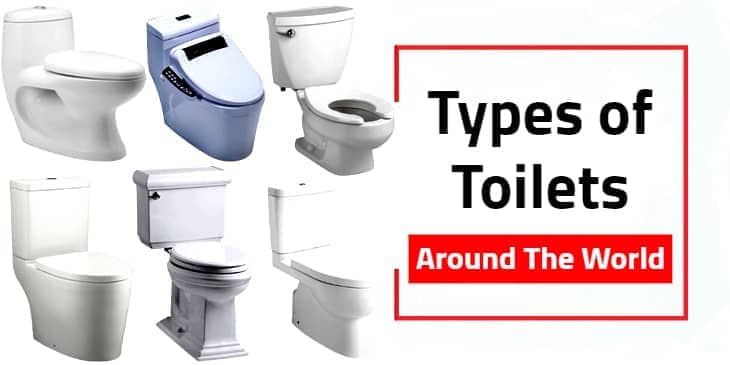With over 15 years in the toilet and bathroom industry, I’ve witnessed toilets transform from basic sanitation tools into sophisticated fixtures that blend technology, sustainability, and cultural significance. Toilets are essential for hygiene in homes, offices, and public spaces, yet the diversity of designs and functionalities can make choosing the best toilet type challenging. In 2025, the global toilet market is booming, with smart toilets projected to reach USD 28.4 billion by 2034 (13.1% CAGR) and eco-friendly designs driven by regulations like the EPA’s WaterSense standard (1.28 gallons per flush in states like California). This comprehensive guide explores the best toilet types worldwide, from traditional flush systems to innovative waterless and child-friendly designs, providing insights into their functionality, cultural roles, and practical applications to help you select the ideal toilet for your needs, whether for a compact apartment, luxury hotel, or rural setting.
Why Choosing the Right Toilet Matters
Toilets influence water consumption, maintenance costs, user comfort, and environmental impact. With global water scarcity concerns and regulations like Australia’s WELS scheme promoting 4-star-rated models, selecting an efficient toilet can save thousands of gallons annually, up to 20,000 gallons for a family of four. Beyond functionality, toilets reflect cultural preferences, from Japan’s high-tech bidets to Africa’s squatting designs. In 2025, advancements like touchless flushing, health-monitoring smart toilets, and waterless systems cater to diverse needs, from urban apartments to off-grid cabins. This guide simplifies the decision-making process by detailing the best toilet types, their global applications, and considerations like installation, space, and sustainability, ensuring you find a solution that balances performance, aesthetics, and eco-consciousness.
Flushing Toilets: The Global Standard
Flushing toilets, used in over 90% of modern homes and public restrooms, operate by releasing water to flush waste through a siphon, triggered by a button or lever. Their versatility and reliability make them a cornerstone of sanitation worldwide, with variations in flush mechanisms addressing different needs.
Gravity-Feed Flushing
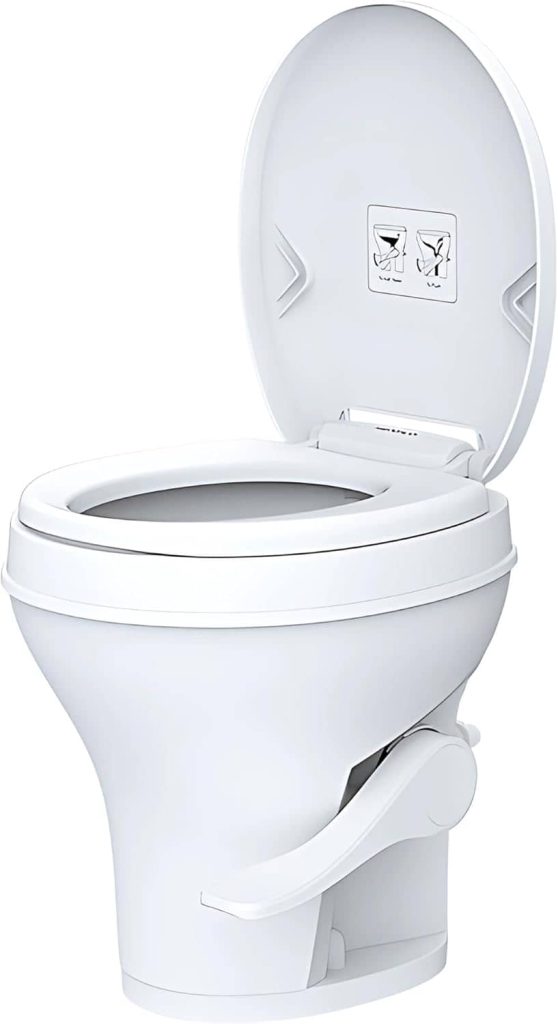
Gravity-feed flushing toilets rely on the natural flow of water through a siphon to remove waste, offering a quiet, dependable flush. These systems use a simple mechanism where water from the tank flows into the bowl, creating a siphon effect that pulls waste into the drain. Typically consuming 1.28 gallons per flush, they align with WaterSense standards, making them a water-efficient choice for households. Their affordability and ease of maintenance have cemented their popularity in residential settings across North America, Europe, and Asia. The design’s simplicity, involving a flapper valve and lever, allows for quick repairs using widely available parts, ensuring longevity—often exceeding 20 years with proper care.
In 2025, gravity-feed toilets are favored for their balance of performance and cost, particularly in family homes where quiet operation is valued. They’re ideal for standard plumbing systems with 2-inch drain lines, and installation is straightforward, often manageable by DIY enthusiasts. However, in areas with low water pressure, they may require multiple flushes for solid waste, which can offset water savings. Culturally, these toilets are a staple in Western countries, reflecting a preference for seated, water-based sanitation. In developing regions, their affordability makes them a practical upgrade from pit latrines. Maintenance involves regular cleaning with non-abrasive products to prevent bowl staining, and ceramic coatings enhance hygiene by reducing bacteria buildup. For small bathrooms or budget-conscious households, gravity-feed toilets offer a reliable, no-frills solution, while their compatibility with modern water-saving standards ensures environmental responsibility. They remain one of the best toilet types for everyday use, blending tradition with efficiency.
Pressure-Assisted Flushing
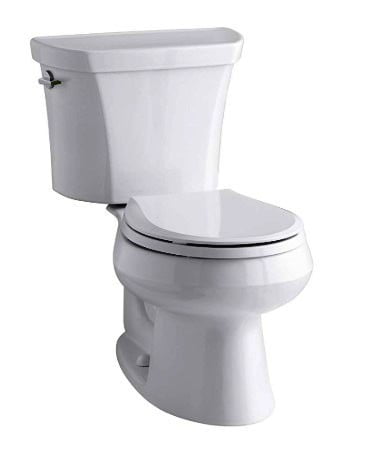
Pressure-assisted flushing toilets use compressed air within a secondary tank to deliver a powerful flush, making them ideal for high-traffic environments like offices, restaurants, or large households. The system traps air in a sealed tank, which, when released, propels water into the bowl with greater force than gravity alone, clearing waste efficiently—often up to 1,000 grams per flush—while using just 1.28 gallons. This clog-resistant design ensures a clean bowl with a single flush, reducing maintenance in busy settings. In 2025, advancements in quiet-flush technology have reduced noise levels by up to 30%, addressing a common drawback and making these toilets more suitable for homes.
Globally, pressure-assisted toilets are prevalent in commercial spaces, particularly in North America and urban Asia, where high usage demands reliability. Their robust flush aligns with WaterSense standards, supporting water conservation without sacrificing performance. Installation requires standard plumbing but benefits from professional calibration to optimize air pressure, ensuring consistent flushes. Maintenance involves annual checks of the pressure tank to prevent leaks, a task manageable by most plumbers. Culturally, these toilets appeal to settings prioritizing efficiency over aesthetics, though their louder flush may deter some residential users. In regions with frequent plumbing challenges, their clog resistance is a significant advantage. These toilets are less common in water-scarce areas due to their reliance on water pressure, but where infrastructure supports it, they excel. For commercial facilities or homes with multiple users, pressure-assisted toilets provide a durable, water-efficient solution, making them one of the best toilet types for demanding environments.
Cyclone Flush System
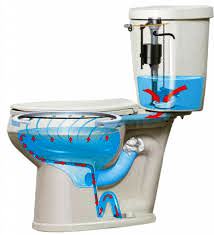
The Cyclone Flush system, a specialized gravity-based mechanism, uses a single powerful nozzle to create a centrifugal flushing action that cleans the bowl thoroughly. Consuming 1.28 gallons per flush, it meets global water-efficiency standards while delivering a robust flush capable of clearing significant waste volumes. Unlike traditional gravity systems, the Cyclone’s targeted water stream minimizes residue, reducing the need for frequent cleaning. In 2025, this system is celebrated for its quiet operation, making it a favorite in residential settings where noise is a concern, such as apartments or homes with young children.
Originating in Japan, the Cyclone Flush reflects the country’s emphasis on hygiene and efficiency, gaining traction in North America and Europe for its balance of performance and water conservation. Its rimless bowl design further enhances cleanliness by eliminating crevices where bacteria can accumulate, a feature appreciated in hygiene-conscious cultures. Installation is similar to standard gravity toilets, requiring a 2-inch drain line, but the nozzle’s precise alignment is crucial for optimal performance, often warranting professional setup. Maintenance is minimal, with ceramic coatings reducing staining, and cleaning involves mild, non-abrasive products to preserve the bowl’s finish. The system’s efficiency makes it ideal for medium-sized bathrooms, where space and water usage are balanced considerations. In regions with stringent water regulations, like California or Australia, the Cyclone Flush’s low consumption aligns with sustainability goals. For homeowners seeking a quiet, efficient, and hygienic toilet, this system stands out as one of the best toilet types, bridging traditional flushing with modern innovation.
Tornado Flush System
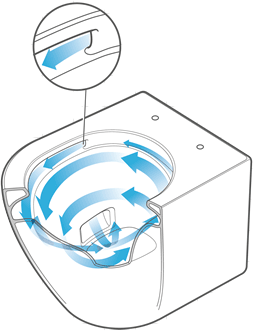
The Tornado Flush system, an advanced gravity-based mechanism, employs two or three nozzles to generate a swirling, tornado-like flush that cleans the entire bowl with remarkable efficiency. Using 0.8-1.28 gallons per flush, it exceeds WaterSense standards, saving up to 30% more water than older 1.6-gallon systems. The powerful swirl ensures thorough waste removal and bowl cleaning, minimizing residue and reducing cleaning frequency. In 2025, the Tornado Flush is a hallmark of modern toilet design, valued for its quiet operation and eco-friendly performance, making it ideal for luxury homes, hotels, and eco-conscious households.
Rooted in Japan’s sanitation culture, where hygiene and technology converge, the Tornado Flush has gained global popularity, particularly in North America and Europe. Its rimless bowl design eliminates bacteria-prone crevices, aligning with hygiene standards in hospitals and upscale residences. Installation requires standard plumbing, but precise nozzle alignment is essential, often requiring professional expertise to maximize flush efficiency. Maintenance is straightforward, with ceramic coatings preventing stains, and cleaning with mild products preserves the bowl’s integrity. The system’s versatility suits various settings, from urban apartments to rural homes with water conservation mandates. In regions like Australia, where WELS ratings prioritize efficiency, the Tornado Flush excels. Its quiet, powerful flush and low water use make it one of the best toilet types for those prioritizing sustainability, hygiene, and modern aesthetics in their bathrooms.
>>>Review On The Best Flushing Toilets<<<
One-Piece Toilets: Seamless Elegance
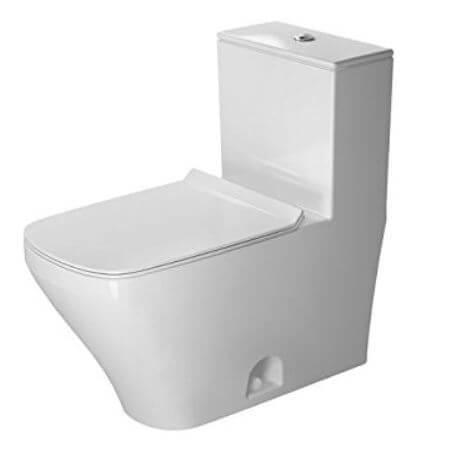
One-piece toilets integrate the bowl and tank into a single ceramic unit, offering a sleek, hygienic design that minimizes crevices where dirt and bacteria can accumulate. Using 1.28 gallons per flush, they meet global water-efficiency standards, making them a popular choice for modern bathrooms. The seamless construction simplifies cleaning, requiring only mild products, and their minimalist aesthetic enhances the visual appeal of luxury homes, apartments, and boutique hotels. In 2025, one-piece toilets are celebrated for their durability, often lasting 20+ years, and their compatibility with standard plumbing systems, which facilitates straightforward installation.
Globally, one-piece toilets are favored in urban settings across Europe, Asia, and North America, where space constraints and design preferences prioritize compact, stylish fixtures. Their heavier weight (80-100 lbs) may require two-person installation, but this ensures stability. Culturally, they align with Western sanitation practices, emphasizing seated comfort and hygiene, and are increasingly adopted in upscale markets in developing nations. The absence of joints reduces maintenance, as there’s no need to clean tank-bowl connections, a common issue with other designs. In regions with strict water regulations, like California, their low-flush efficiency supports conservation efforts. These toilets are ideal for small bathrooms, where their compact footprint maximizes space, or for homeowners seeking a premium look without complex upkeep. While slightly pricier than some alternatives due to their engineering, their longevity and ease of maintenance justify the investment. One-piece toilets rank among the best toilet types for those valuing elegance, hygiene, and efficiency in modern bathroom design.
>>>Review On The Best One-Piece Toilets<<<
Two-Piece Toilets: Customizable Classics

Two-piece toilets feature separate bowls and tanks assembled as a unit, offering affordability and customization options. Consuming 1.28 gallons per flush, they align with water-efficiency standards, making them a staple in households worldwide. Their modular design allows users to mix components, such as different tank sizes or bowl shapes, to suit specific needs or budgets. In 2025, two-piece toilets remain popular for their durability, often lasting 20+ years, and the widespread availability of replacement parts, like flapper valves, ensures easy repairs without professional help.
These toilets are prevalent in North America, Latin America, and parts of Asia, reflecting a preference for cost-effective, reliable sanitation. Installation is DIY-friendly, requiring basic tools and standard 2-inch plumbing, making them accessible for homeowners. However, the joint between the bowl and tank requires regular cleaning to prevent mold, a minor drawback compared to their affordability. Culturally, two-piece toilets are rooted in Western sanitation traditions, offering seated comfort and familiarity, and are common in family homes where practicality trumps aesthetics. In developing regions, their low cost makes them a practical upgrade from basic latrines. Maintenance involves checking the flush valve and cleaning with non-abrasive products to maintain hygiene. For budget-conscious households or traditional bathrooms, two-piece toilets are one of the best toilet types, delivering reliable performance and flexibility without the premium price tag of more advanced designs.
>>>Review On The Best Two-Piece Toilets<<<
Wall-Mounted Toilets: Space-Saving Sophistication

Wall-mounted toilets, or wall-hung toilets, feature a bowl affixed to the wall with the tank concealed behind it, creating a minimalist, “tankless” appearance. Using 1.28 gallons per flush, they meet water-efficiency standards, saving space and simplifying floor cleaning. In 2025, their sleek design is a hallmark of modern bathrooms, particularly in urban Europe, Asia, and North America, where compact living spaces demand efficient use of square footage. The elevated bowl, typically adjustable in height, supports up to 880 lbs with proper wall reinforcement, making it suitable for diverse users.
Installation requires professional plumbing to secure the in-wall carrier system, which houses the tank and connects to standard drain lines. This complexity increases upfront costs but ensures a durable setup. Maintenance involves annual checks of the concealed tank to prevent leaks, though the exposed bowl is easy to clean with mild products. Culturally, wall-mounted toilets reflect Europe’s emphasis on space-conscious design and hygiene, with their popularity growing in upscale hotels and apartments globally. In regions like Japan, where compact bathrooms are common, they’re valued for their aesthetic and functional benefits. Their water efficiency aligns with regulations in water-scarce areas, such as Australia’s WELS standards. Ideal for small bathrooms or commercial settings like boutique restaurants, wall-mounted toilets are among the best toilet types for those prioritizing style, space savings, and modern sanitation solutions.
>>>Review On The Best Wall Mounted Toilets<<<
Portable Toilets: Mobile Convenience

Portable toilets, often called porta-potties, are lightweight, transportable units designed for temporary sanitation in settings like festivals, construction sites, or campsites. Using chemical treatments to neutralize waste and odors, they require no plumbing, making them highly versatile. In 2025, portable toilets are a critical solution for outdoor events and remote areas, consuming minimal resources while providing hygienic sanitation. Their lightweight design, typically 15-20 lbs, allows easy transport, and setup is as simple as placing the unit on a level surface.
Globally, portable toilets are essential in regions with limited infrastructure, such as rural Africa or South Asia, and are widely used at large-scale events like music festivals in North America and Europe. Culturally, they’re a practical response to temporary sanitation needs, prioritizing function over comfort, though modern designs incorporate features like hand sanitizers to enhance user experience. Maintenance involves emptying waste tanks at designated facilities and cleaning with biodegradable solutions, a process manageable by event staff or rental companies. In water-scarce regions, their lack of water dependency is a significant advantage, aligning with sustainability goals. For outdoor enthusiasts or event organizers, portable toilets offer unmatched convenience, ensuring sanitation without permanent infrastructure. They rank among the best toilet types for mobile, temporary applications, bridging the gap between accessibility and environmental responsibility.
Composting Toilets: Sustainable Solutions
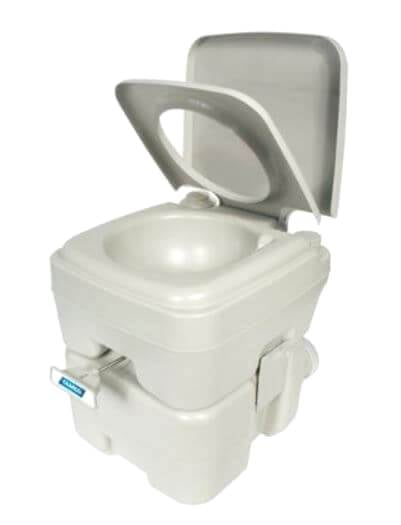
Composting toilets, or dry toilets, use aerobic decomposition to transform waste into compost without water, offering a sustainable solution for off-grid homes, cabins, or water-scarce regions. By separating liquid and solid waste through diverter systems, they facilitate natural breakdown using materials like wood chips or peat moss. In 2025, these toilets are pivotal in eco-conscious communities, with innovations like solar-powered ventilation enhancing efficiency. Consuming zero water, they support global sustainability goals, particularly in regions facing water shortages, such as parts of Africa and Australia.
Installation requires no plumbing, only a ventilation system to manage odors, making them ideal for remote settings. Maintenance involves emptying compost bins every 3-6 months and adding bulking materials, a straightforward process for eco-minded users. Culturally, composting toilets resonate with indigenous and rural communities in Latin America and Asia, where waste recycling aligns with traditional practices. In Western countries, they’re popular among off-grid enthusiasts and eco-villages, reflecting a growing emphasis on environmental stewardship. Their ability to produce usable compost supports agricultural applications, adding value in rural economies. In 2025, their adoption in urban tiny homes highlights their versatility. For users prioritizing sustainability and independence from water infrastructure, composting toilets are one of the best toilet types, offering an eco-friendly alternative to traditional sanitation.
Dual Flush Toilets: Water-Saving Versatility
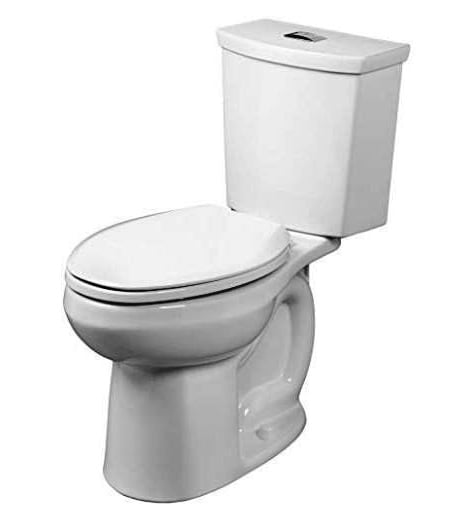
Dual flush toilets provide two flush options: a low-volume flush (0.8-1.1 gallons) for liquid waste and a full flush (1.28 gallons) for solids, saving up to 20% more water than single-flush systems. This flexibility makes them a cornerstone of water conservation in 2025, particularly in regions with strict regulations like California’s WaterSense standards or Australia’s WELS ratings. The dual-button or valve system combines gravity and pressure-assisted mechanisms, ensuring efficient waste removal while minimizing water use, appealing to both residential and commercial users.
Globally, dual flush toilets are widespread in Europe, Australia, and urban Asia, where water scarcity drives demand for efficient sanitation. Their design aligns with Western seated toilet preferences, offering comfort and familiarity, while their eco-friendly performance makes them a favorite in green buildings. Installation is similar to standard gravity toilets, requiring a 2-inch drain line, and is manageable for DIY enthusiasts. Maintenance involves calibrating valves to prevent leaks, a simple task with widely available parts. Culturally, they reflect a shift toward environmental responsibility, particularly in developed nations where water conservation is a public priority. In 2025, their affordability and versatility make them ideal for families, offices, or public restrooms seeking to reduce water bills without compromising performance. Dual flush toilets rank among the best toilet types for eco-conscious users valuing efficiency and practicality.
>>>Review On The Best Dual Flush Toilets<<<
Upflush Toilets: Flexible Installation
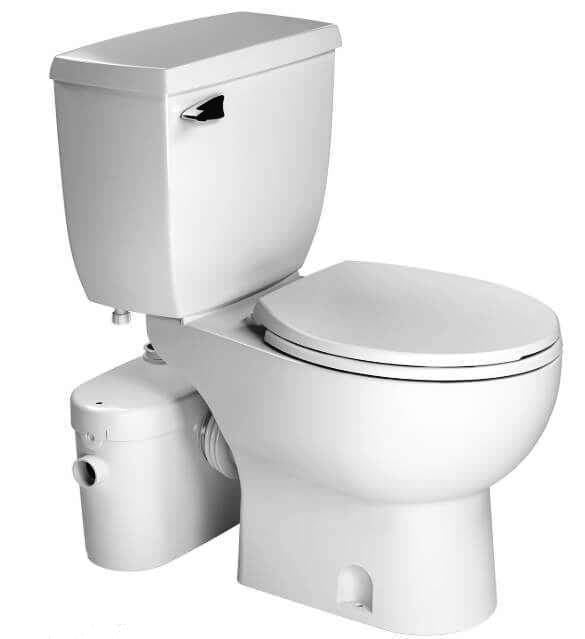
Upflush toilets use a macerating pump to grind and pump waste upward or horizontally, enabling installation in areas without standard plumbing, such as basements, garages, or renovated spaces. Consuming 1.28 gallons per flush, they meet water-efficiency standards, offering a practical solution for unconventional bathroom setups. In 2025, upflush toilets are popular in urban homes and commercial retrofits, where adding plumbing is costly or impractical. The pump’s compact design fits behind or below the toilet, requiring only a water supply and electrical outlet for operation.
Installation is DIY-friendly, taking 2-4 hours with basic tools, though professional setup ensures optimal pump performance. Maintenance involves annual pump inspections to prevent clogs, and quiet-pump advancements in 2025 reduce noise, making them suitable for residential use. Culturally, upflush toilets are prevalent in North America and Europe, where home renovations are common, reflecting a preference for flexible, cost-effective sanitation upgrades. In regions with aging infrastructure, they provide an accessible alternative to extensive plumbing overhauls. Their versatility suits small apartments, guest suites, or commercial spaces like pop-up shops. While the pump adds a maintenance step, their ability to create bathrooms in challenging locations makes them invaluable. Upflush toilets are one of the best toilet types for homeowners and businesses seeking adaptable, efficient sanitation solutions without major construction.
Elongated Toilets: Comfort and Style
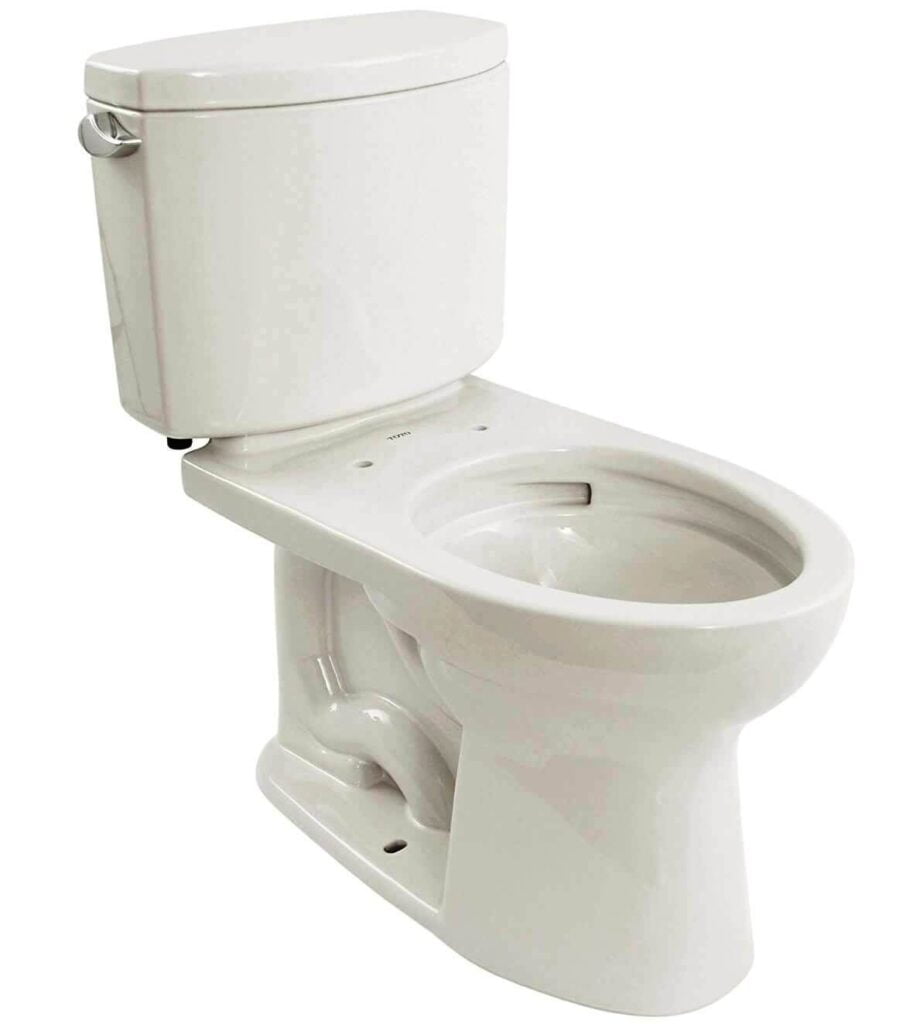
Elongated toilets feature an oval-shaped bowl, extending 2 inches longer than round bowls, providing enhanced comfort for adults and taller users. Using 1.28 gallons per flush, they meet water-efficiency standards, combining functionality with a sleek, modern aesthetic. In 2025, elongated toilets are a staple in family homes, luxury apartments, and commercial settings across North America and Europe, where their ergonomic design aligns with Western preferences for seated comfort. The extended bowl also supports accessibility, often meeting ADA standards when paired with a 17-19-inch seat height, making them ideal for seniors or those with mobility challenges.
Installation is straightforward, requiring standard 2-inch plumbing, similar to other flush toilets, and is manageable for DIY enthusiasts. Maintenance is minimal, involving bowl cleaning with non-abrasive products and periodic valve checks to ensure efficient flushing. Culturally, elongated toilets reflect a focus on user comfort and hygiene, with their larger bowl reducing splash and improving cleanliness. In 2025, their popularity in upscale markets, including hotels and office buildings, underscores their aesthetic appeal. However, their larger footprint may not suit tiny bathrooms, where round bowls are preferred. In regions with water conservation mandates, their low-flush design supports sustainability. Elongated toilets are among the best toilet types for users prioritizing comfort, accessibility, and modern style in medium to large bathrooms, offering a balance of practicality and elegance.
Tankless Toilets: Modern Efficiency
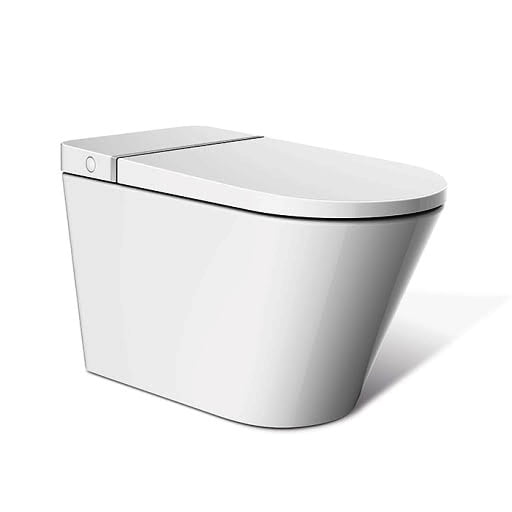
Tankless toilets rely on a direct water supply and an electric or pressure-driven pump to flush waste, using 1.28 gallons per flush without a traditional tank. This compact design saves space and delivers a powerful flush, making them ideal for urban apartments, public restrooms, and luxury hotels. In 2025, tankless toilets are celebrated for their sleek, minimalist aesthetic and clog-resistant performance, particularly in high-traffic settings where reliability is paramount. Their water efficiency aligns with global standards like WaterSense, supporting conservation in water-scarce regions.
Installation requires high water pressure (25-80 psi) and, for electric models, a power source, often necessitating professional plumbing and electrical work. Maintenance involves checking the pump or water lines to ensure consistent flushing, a task manageable by plumbers. Culturally, tankless toilets are prevalent in Japan and Europe, where compact, high-tech sanitation is valued, and are gaining traction in North America’s urban markets. Their design reflects a modern preference for streamlined fixtures, enhancing bathroom aesthetics. In commercial settings like airports or malls, their fast flush cycle improves user turnover. While their reliance on water pressure and power limits use in rural areas, their efficiency and style make them a top choice for modern bathrooms. Tankless toilets are among the best toilet types for those seeking space-saving, high-performance sanitation with a contemporary look.
Square Toilets: Bold Aesthetics
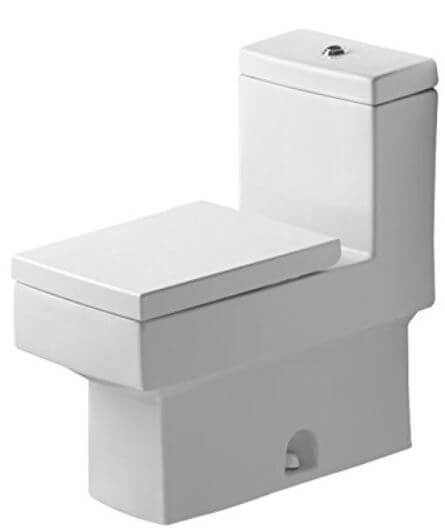
Square toilets feature angular, box-like bowls, offering a bold, modern aesthetic that stands out from traditional rounded designs. Using 1.28 gallons per flush, they meet water-efficiency standards, providing a spacious, comfortable seat while maintaining eco-friendly performance. In 2025, square toilets are a niche but growing choice in designer bathrooms, particularly in Europe and urban Asia, where architectural trends favor geometric shapes and minimalist luxury. Their unique look makes them a statement piece in upscale homes, boutique hotels, or high-end offices.
Installation is similar to standard flush toilets, requiring a 2-inch drain line, but their heavier weight may need sturdy mounting. Maintenance is minimal, with ceramic coatings reducing staining, and cleaning involves mild products to preserve the finish. Culturally, square toilets reflect a shift toward experimental design in Western and Asian markets, where bathrooms are increasingly seen as spaces for artistic expression. Their spacious bowl aligns with comfort preferences in developed nations, though their unconventional shape may not appeal to traditionalists. In 2025, their rarity can make replacement parts harder to source, a consideration for long-term use. Ideal for medium to large bathrooms, square toilets cater to design-focused users willing to invest in aesthetics. They rank among the best toilet types for those prioritizing style and comfort in a modern, architecturally driven bathroom setting.
>>>Review On The Best Square Toilets<<<
Corner Toilets: Space-Optimized Design
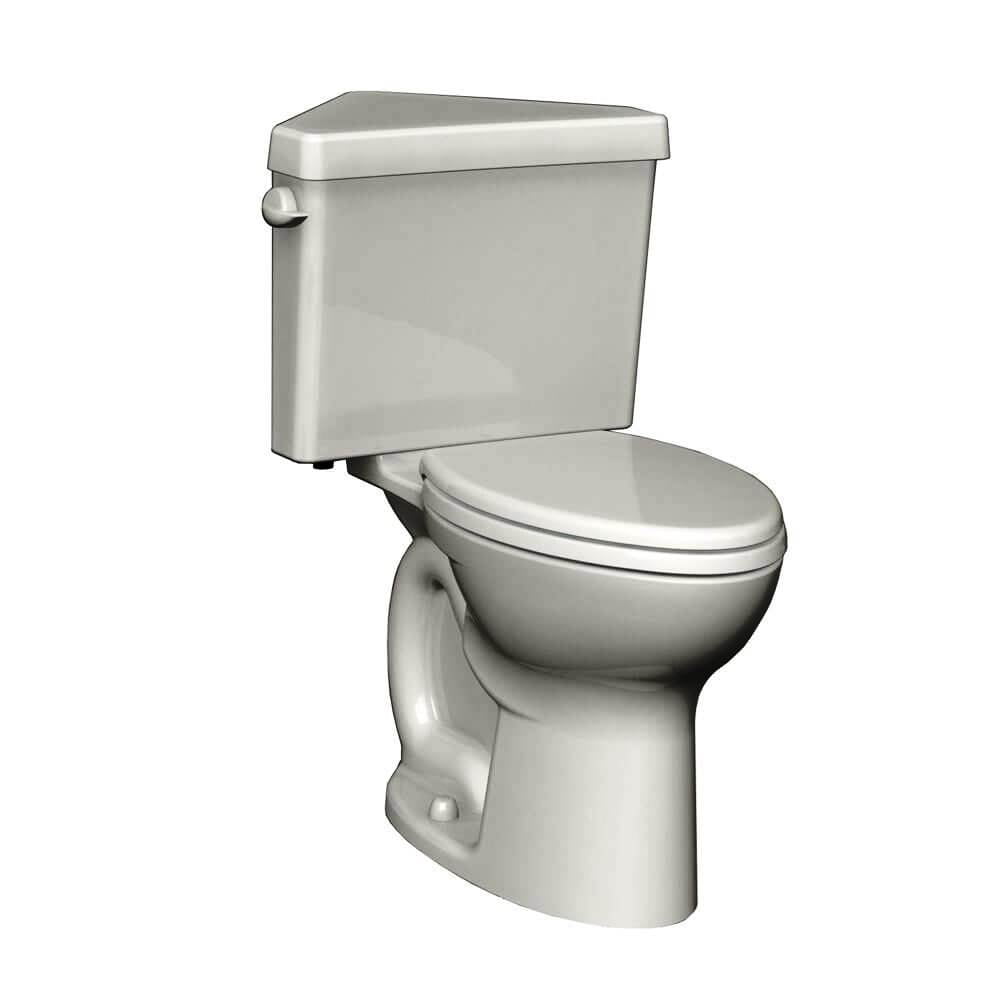
Corner toilets feature triangular tanks designed to fit into bathroom corners, maximizing floor space in small or irregularly shaped rooms. Using 1.28 gallons per flush, they meet water-efficiency standards, offering a compact solution without sacrificing performance. In 2025, corner toilets are popular in urban homes, apartments, and RVs across North America and Europe, where space constraints demand creative design. Their gravity-based flush ensures reliable waste removal, making them suitable for powder rooms or guest bathrooms.
Installation requires precise measurements to align with corner plumbing, typically a 2-inch drain line, and is manageable for DIY enthusiasts with plumbing experience. Maintenance involves cleaning the bowl with non-abrasive products and checking the flush valve, similar to standard toilets. Culturally, corner toilets align with Western sanitation preferences for seated comfort, while their space-saving design resonates in densely populated cities like Tokyo or London. In 2025, their eco-friendly flush supports water conservation mandates, such as Australia’s WELS ratings. While less common than round or elongated toilets, their niche application makes them invaluable for tiny spaces. For homeowners or designers working with limited square footage, corner toilets are one of the best toilet types, offering efficiency, hygiene, and a practical solution for compact bathrooms.
>>>Review On The Best Corner Toilets<<<
Round Bowl Toilets: Classic Compactness

Round bowl toilets, with their circular bowl design, are compact and space-efficient, using 1.28 gallons per flush to meet water-efficiency standards. Their smaller footprint makes them ideal for small bathrooms, children’s bathrooms, or traditional homes where space is limited. In 2025, round bowl toilets remain a budget-friendly staple in North America, Latin America, and parts of Asia, offering reliable gravity-based flushing for everyday use. Their design prioritizes accessibility, particularly for children or shorter users, due to the bowl’s lower profile compared to elongated models.
Installation is straightforward, requiring standard 2-inch plumbing, and is often DIY-friendly, making them a popular choice for home renovations. Maintenance involves regular cleaning with non-abrasive products to prevent staining, and ceramic coatings enhance hygiene. Culturally, round bowl toilets are rooted in Western sanitation traditions, providing seated comfort and familiarity, and are common in family homes and schools. In developing regions, their affordability makes them a practical upgrade from basic sanitation systems. In 2025, their water-efficient flush aligns with global conservation efforts, such as California’s WaterSense standards. While less comfortable for taller adults, their compact size and cost-effectiveness make them a top choice for space-constrained or budget-conscious settings. Round bowl toilets are among the best toilet types for practical, accessible sanitation in traditional or small bathrooms.
Pressure-Assisted Toilets: Commercial Power

Pressure-assisted toilets, distinct from their flushing mechanism, are standalone units that use compressed air to deliver a powerful 1.28-gallon flush, designed for high-traffic environments like commercial buildings, schools, or large households. The air-pressure system propels water with force, clearing significant waste volumes and resisting clogs, making them highly reliable in busy settings. In 2025, advancements in noise reduction have made these toilets quieter, expanding their appeal to residential users seeking robust performance without frequent maintenance.
Globally, pressure-assisted toilets are standard in commercial spaces across North America, Europe, and urban Asia, where their clog-resistant design supports high user turnover. Their water efficiency aligns with WaterSense and WELS standards, making them eco-friendly despite their powerful flush. Installation requires professional calibration to ensure optimal air pressure, using standard 2-inch plumbing. Maintenance involves annual checks of the pressure tank, a task for plumbers, but their durability—often lasting 15+ years—reduces long-term costs. Culturally, these toilets prioritize function over aesthetics, appealing to settings where reliability is critical, such as airports or restaurants. In regions with reliable water infrastructure, they excel, though their noise may deter use in quiet homes. For commercial facilities or homes with heavy usage, pressure-assisted toilets are one of the best toilet types, offering unmatched power and efficiency.
Gravity Toilets: Simple Reliability
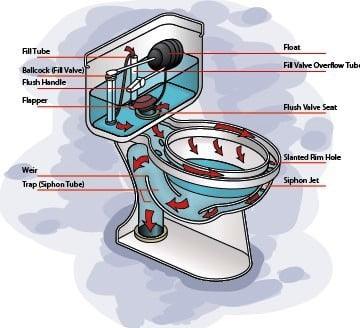
Gravity toilets, the most common residential type, use a lever and flapper valve to release water for a 1.28-gallon flush, relying on gravity to clear waste through a siphon. Their simplicity ensures reliability and affordability, making them a cornerstone of household sanitation worldwide. In 2025, gravity toilets are valued for their ease of repair, with parts like flapper valves widely available, and their durability, often lasting 20+ years with minimal upkeep. Their quiet flush makes them ideal for homes with sleeping children or noise-sensitive environments.
Prevalent in North America, Europe, and parts of Asia, gravity toilets align with Western preferences for seated, water-based sanitation. Installation is DIY-friendly, requiring a 2-inch drain line, and is accessible for homeowners with basic plumbing skills. Maintenance involves cleaning the bowl with non-abrasive products and replacing valves every few years. Culturally, they’re a familiar choice in family homes and apartments, offering comfort and consistency. In developing regions, their affordability supports widespread adoption as an upgrade from pit latrines. In 2025, their water-efficient design meets global standards like WaterSense, supporting conservation in water-scarce areas. While less powerful than pressure-assisted systems, their reliability and low cost make them a top choice for everyday use. Gravity toilets are among the best toilet types for budget-conscious households seeking simple, long-lasting sanitation.
Touchless Flush Toilets: Hygienic Innovation
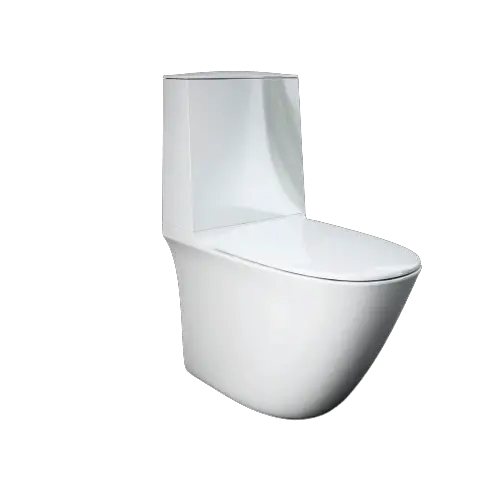
Touchless flush toilets use motion sensors to trigger a 1.28-gallon flush, minimizing contact and enhancing hygiene in homes and public restrooms. By eliminating the need to touch a valve or button, they reduce germ transmission, a critical feature in 2025 amid heightened health awareness. These toilets use gravity or pressure-assisted mechanisms, ensuring efficient waste removal while meeting WaterSense standards. Their sleek design and modern technology make them a popular choice for upscale homes, offices, and commercial spaces like malls or airports.
Globally, touchless flush toilets are prevalent in North America, Europe, and urban Asia, reflecting a cultural shift toward hygiene-focused sanitation. Installation requires a power source—batteries or electrical wiring—adding complexity but manageable by professionals. Maintenance involves cleaning sensors and checking power sources, ensuring consistent operation. In public settings, their hands-free operation improves user experience and reduces cleaning staff workload. Culturally, they align with modern preferences for technology-driven convenience, particularly in developed nations. In 2025, their water efficiency supports conservation mandates, such as Australia’s WELS ratings. While the reliance on power may limit use in rural areas, their hygienic benefits make them ideal for high-traffic or health-conscious environments. Touchless flush toilets are one of the best toilet types for users prioritizing hygiene and modern functionality in residential or commercial bathrooms.
Pull Chain Toilets: Vintage Charm

Pull chain toilets, powered by gravity, use a chain or cord to release water for a 1.6-gallon flush, offering a nostalgic, Victorian aesthetic. In 2025, these toilets are a niche choice for vintage homes, boutique hotels, or heritage buildings, where their ornate design adds character. The gravity-based system ensures reliable flushing, similar to modern gravity toilets, but their higher water consumption reflects older standards, making them less eco-friendly than low-flush alternatives. Their ceramic construction ensures durability, often lasting decades with proper care.
Popular in North America and Europe, pull chain toilets appeal to homeowners and designers preserving historical aesthetics, particularly in regions with a strong architectural heritage. Installation is similar to standard gravity toilets, requiring a 2-inch drain line, and is manageable for DIY enthusiasts. Maintenance involves checking the chain and valve for wear, with parts available from specialty suppliers. Culturally, these toilets evoke a sense of nostalgia, contrasting with the high-tech trends of modern sanitation. In 2025, their limited water efficiency may not suit regions with strict conservation mandates, like California, but their charm outweighs this for aesthetic-focused users. Ideal for traditional bathrooms or themed commercial spaces, pull chain toilets are among the best toilet types for those seeking vintage elegance and reliable performance.
Water-Saving Toilets: Eco-Conscious Choice
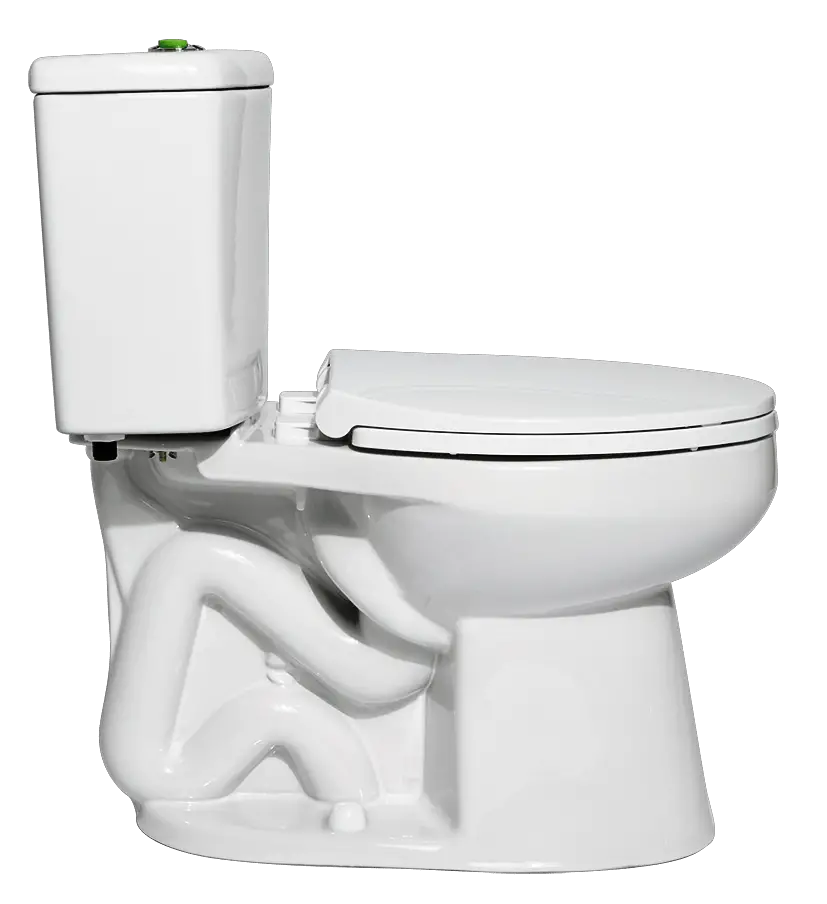
Water-saving toilets, encompassing low-flow and dual-flush designs, use 0.8-1.6 gallons per flush, significantly reducing water consumption compared to older 3.5-gallon models. In 2025, they’re a cornerstone of sustainable sanitation, driven by global regulations like the EPA’s WaterSense program and Australia’s WELS 4-star ratings. These toilets employ gravity or pressure-assisted mechanisms to ensure efficient waste removal while minimizing water use, making them ideal for households, offices, and green buildings aiming to lower water bills and environmental impact.
Globally, water-saving toilets are widespread in water-scarce regions like California, Australia, and parts of Europe, where conservation is a priority. Their design aligns with Western seated toilet preferences, offering comfort and familiarity, while their eco-friendly performance appeals to environmentally conscious users. Installation is straightforward, requiring standard 2-inch plumbing, and maintenance involves valve calibration to prevent leaks, a simple task with accessible parts. Culturally, they reflect a growing awareness of resource conservation, particularly in developed nations. In 2025, their affordability and efficiency make them a top choice for families and commercial facilities. In regions with limited water infrastructure, their low consumption supports sustainable development. Water-saving toilets are among the best toilet types for eco-conscious users seeking to balance performance, cost, and environmental responsibility in modern bathrooms.
Comfort Height Toilets: Accessible Design
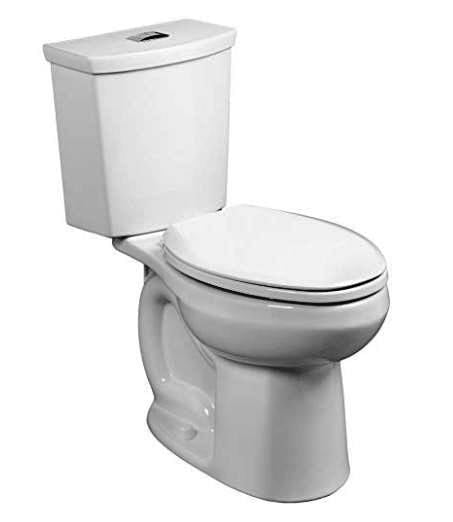
Comfort height toilets, with seat heights of 17-19 inches, meet ADA accessibility standards, offering ergonomic seating for seniors, taller adults, or those with mobility challenges. Using 1.28 gallons per flush, they align with water-efficiency standards, combining accessibility with eco-friendly performance. In 2025, these toilets are popular in aging-in-place homes, hospitals, and public restrooms across North America and Europe, where their taller design reduces strain on knees and hips, enhancing user independence and comfort.
Installation is similar to standard flush toilets, requiring a 2-inch drain line, and is manageable for DIY enthusiasts. Maintenance involves cleaning the bowl with non-abrasive products and checking valves, ensuring long-term reliability. Culturally, comfort height toilets reflect Western preferences for seated sanitation, with a focus on accessibility and inclusivity, particularly in developed nations with aging populations. In 2025, their water-efficient flush supports conservation mandates, such as California’s WaterSense standards. Their larger footprint may not suit tiny bathrooms, but their ergonomic benefits make them ideal for family homes or commercial settings prioritizing user comfort. In regions with growing elderly populations, like Japan, their adoption is increasing. Comfort height toilets are one of the best toilet types for accessible, user-friendly sanitation in residential and public spaces.
>>>Review On The Best Comfort Height Toilets<<<
Double-Cyclone Toilets: Efficient Flushing
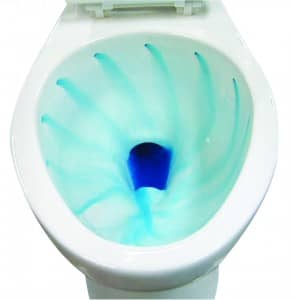
Double-Cyclone toilets use two nozzles to create a swirling, gravity-based flush, consuming 0.8-1.6 gallons per flush. This system cleans the bowl thoroughly with minimal water, meeting WaterSense standards and reducing residue for enhanced hygiene. In 2025, Double-Cyclone toilets are valued for their quiet operation and eco-friendly performance, making them ideal for residential bathrooms, hotels, or offices where noise and water conservation are priorities. Their rimless bowl design minimizes bacteria buildup, simplifying cleaning.
Originating in Japan, Double-Cyclone toilets reflect the country’s focus on hygiene and efficiency, gaining popularity in North America and Europe. Installation requires standard 2-inch plumbing, with precise nozzle alignment to ensure optimal flushing, often warranting professional setup. Maintenance is minimal, with ceramic coatings preventing stains, and cleaning involves mild products. Culturally, these toilets appeal to hygiene-conscious users in developed nations, where advanced flushing technology is valued. In 2025, their low water consumption aligns with global sustainability goals, such as Australia’s WELS ratings. Ideal for medium-sized bathrooms, they balance power and efficiency, making them a top choice for eco-conscious households or commercial spaces. Double-Cyclone toilets are among the best toilet types for those seeking quiet, hygienic, and water-efficient sanitation.
Waterless Toilets: Sustainable Innovation
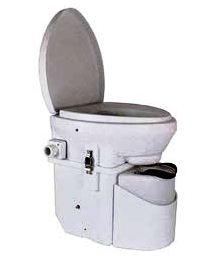
Waterless toilets, including composting and incinerating systems, process waste without water, offering an eco-friendly solution for off-grid homes, rural areas, or water-scarce regions. Composting models use aerobic decomposition to transform waste into fertilizer, while incinerating models burn waste into ash. In 2025, waterless toilets are critical for sustainability, consuming zero water and supporting global conservation efforts, particularly in regions like Sub-Saharan Africa or Australia, where water shortages are prevalent. Their design eliminates the need for plumbing, relying on ventilation or power for operation.
Installation is straightforward, requiring ventilation for composting models or power for incinerating ones, making them ideal for remote cabins or eco-villages. Maintenance involves emptying compost bins or ash every 3-6 months, a manageable task for eco-minded users. Culturally, waterless toilets resonate with indigenous communities in Latin America and Asia, where waste recycling aligns with traditional practices, and are popular among Western off-grid enthusiasts. In 2025, their adoption in urban tiny homes highlights their versatility. Their ability to produce compost or minimize waste disposal supports sustainable development. Waterless toilets are one of the best toilet types for users prioritizing environmental responsibility and independence from water infrastructure.
Flushometer Toilets: Commercial Efficiency
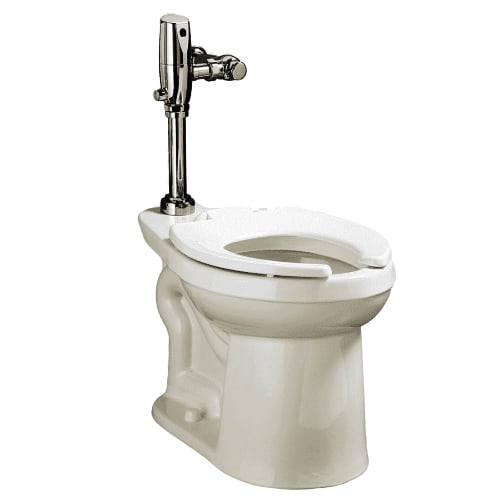
Flushometer valve toilets, common in public restrooms, use a high-pressure valve to deliver a fast 1.28-gallon flush, ensuring efficiency in high-traffic settings like schools, malls, or airports. Unlike tank-based systems, they rely on direct water pressure, providing a powerful, clog-resistant flush that supports rapid user turnover. In 2025, their water efficiency aligns with WaterSense standards, making them a sustainable choice for commercial facilities where reliability and hygiene are paramount.
Globally, flushometer toilets are standard in North America, Europe, and urban Asia, reflecting a preference for functional, high-performance sanitation in public spaces. Installation requires professional plumbing to connect to high-pressure water lines (35-80 psi), ensuring consistent flushing. Maintenance involves valve checks to prevent leaks, a task for facility managers. Culturally, these toilets prioritize efficiency over comfort, appealing to settings where speed and cleanliness are critical. In 2025, their eco-friendly flush supports conservation mandates, such as Australia’s WELS ratings. While their noise and industrial design may not suit homes, their durability—lasting 15+ years—makes them ideal for demanding environments. Flushometer toilets are among the best toilet types for commercial settings needing fast, reliable sanitation.
Smart Toilets: The Future of Bathrooms
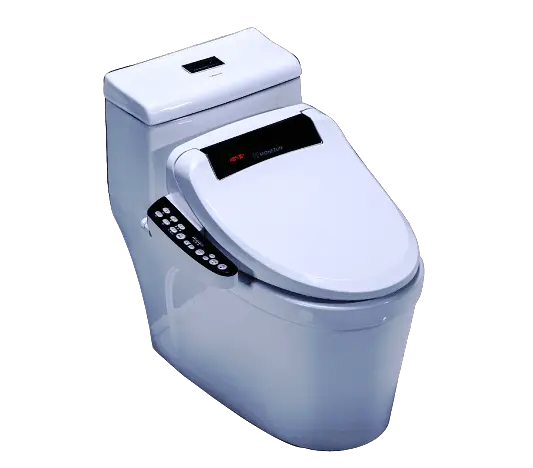
Smart toilets integrate advanced technologies like touchless flushing, heated seats, bidet functions, and IoT connectivity, using 1.0-1.6 gallons per flush. In 2025, the smart toilet market, valued at USD 9.57 billion in 2023 (12.6% CAGR), offers features like UV sterilization and health monitoring, appealing to tech-savvy users in luxury homes, hotels, and offices. These toilets enhance hygiene and comfort, with sensors and apps allowing personalized settings, such as water temperature or flush strength.
Popular in Japan, North America, and Europe, smart toilets reflect a cultural shift toward technology-driven sanitation, particularly in urban areas where smart homes are prevalent. Installation requires power and Wi-Fi, adding complexity but manageable by professionals. Maintenance involves cleaning sensors and nozzles, ensuring consistent performance. In 2025, their water efficiency aligns with WaterSense standards, supporting conservation in water-scarce regions. Culturally, they appeal to users valuing convenience and hygiene, with features like self-cleaning bowls reducing manual upkeep. While their high cost and power dependency limit use in rural areas, their versatility makes them ideal for upscale settings. Smart toilets are one of the best toilet types for those seeking cutting-edge functionality and luxury in modern bathrooms.
>>>Review On The Best Small Toilets<<<
Eco-Friendly Toilets: Sustainability First
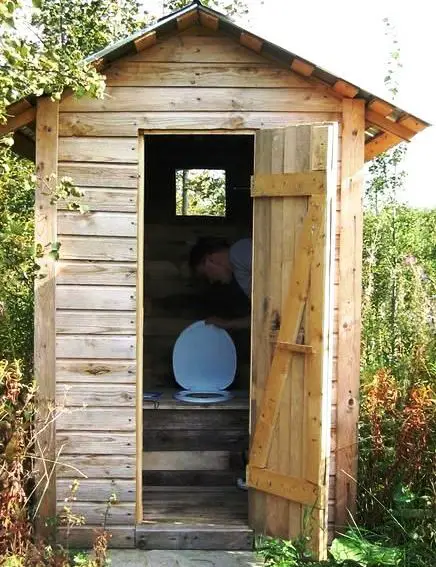
Eco-friendly toilets, including low-flow, dual-flush, and bio-digester models, prioritize water conservation and waste recycling, using 0.8-1.28 gallons per flush. In 2025, they’re essential in green buildings, water-scarce regions, and eco-conscious households, driven by regulations like the EPA’s WaterSense program and Australia’s WELS ratings. Bio-digesters convert waste into fertilizer, while low-flow systems ensure efficient flushing, reducing water bills and environmental impact.
Globally, eco-friendly toilets are popular in California, Australia, and Europe, where sustainability is a priority. Their design aligns with Western seated toilet preferences, offering comfort while minimizing resource use. Installation is standard for flush-based models, requiring 2-inch plumbing, while bio-digesters need ventilation. Maintenance involves valve calibration for flush models or bin emptying for digesters. Culturally, they reflect a global shift toward environmental responsibility, particularly in developed nations. In 2025, their affordability and efficiency make them ideal for families, offices, or rural communities. In regions with limited water, their low consumption supports sustainable development. Eco-friendly toilets are among the best toilet types for users committed to reducing their ecological footprint while maintaining reliable sanitation.
Urinal Toilets: Space-Saving Solutions
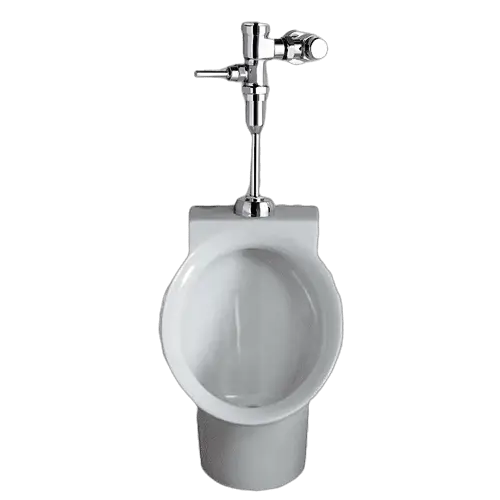
Urinal toilets, designed for male users, use 0.5-1 gallon per flush or operate waterlessly, offering space-efficient sanitation for public restrooms, offices, or stadiums. Their compact design maximizes floor space, and waterless models use trap cartridges to manage waste and odors without water. In 2025, urinals are a staple in commercial settings across North America, Europe, and Asia, where their low water consumption aligns with WaterSense and WELS standards, supporting sustainability in high-traffic environments.
Installation is minimal, requiring a 2-inch drain line for flush models or simple mounting for waterless ones, making them cost-effective for facility managers. Maintenance involves cleaning the bowl or replacing cartridges, a quick task that ensures hygiene. Culturally, urinals reflect a practical approach to public sanitation, prioritizing efficiency and space over privacy, common in Western and urban Asian settings. In 2025, their eco-friendly design makes them ideal for green buildings or water-scarce regions. While limited to male use and public settings, their low cost and minimal upkeep make them invaluable for high-traffic facilities. Urinal toilets are one of the best toilet types for commercial spaces seeking efficient, sustainable sanitation solutions.
Expensive Toilets: Luxury Redefined
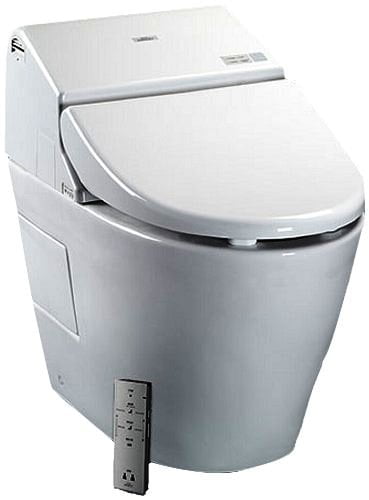
Expensive toilets, often custom-designed, incorporate premium features like voice-activated flushing, heated seats, bidet functions, and UV sterilization, using 1.0-1.6 gallons per flush. In 2025, these toilets are a status symbol in luxury homes, celebrity estates, and high-end hotels, particularly in North America, Europe, and the Middle East, where opulence drives design. Their advanced technology enhances hygiene and comfort, with features like self-cleaning bowls and health monitoring appealing to affluent users.
Installation is complex, requiring power, Wi-Fi, and standard plumbing, often necessitating professional expertise. Maintenance involves cleaning sensors and nozzles, ensuring consistent performance. Culturally, expensive toilets reflect a desire for exclusivity and innovation, aligning with the tech-savvy, luxury-focused lifestyles of urban elites. In 2025, their water efficiency meets WaterSense standards, balancing indulgence with sustainability. While their high cost and power dependency limit broad adoption, their bespoke design makes them ideal for upscale settings where aesthetics and functionality converge. In regions with wealth concentration, like Dubai or New York, they’re a statement of prestige. Expensive toilets are among the best toilet types for affluent users seeking unparalleled luxury and cutting-edge sanitation in their bathrooms.
Bidet Toilets: Hygiene and Comfort
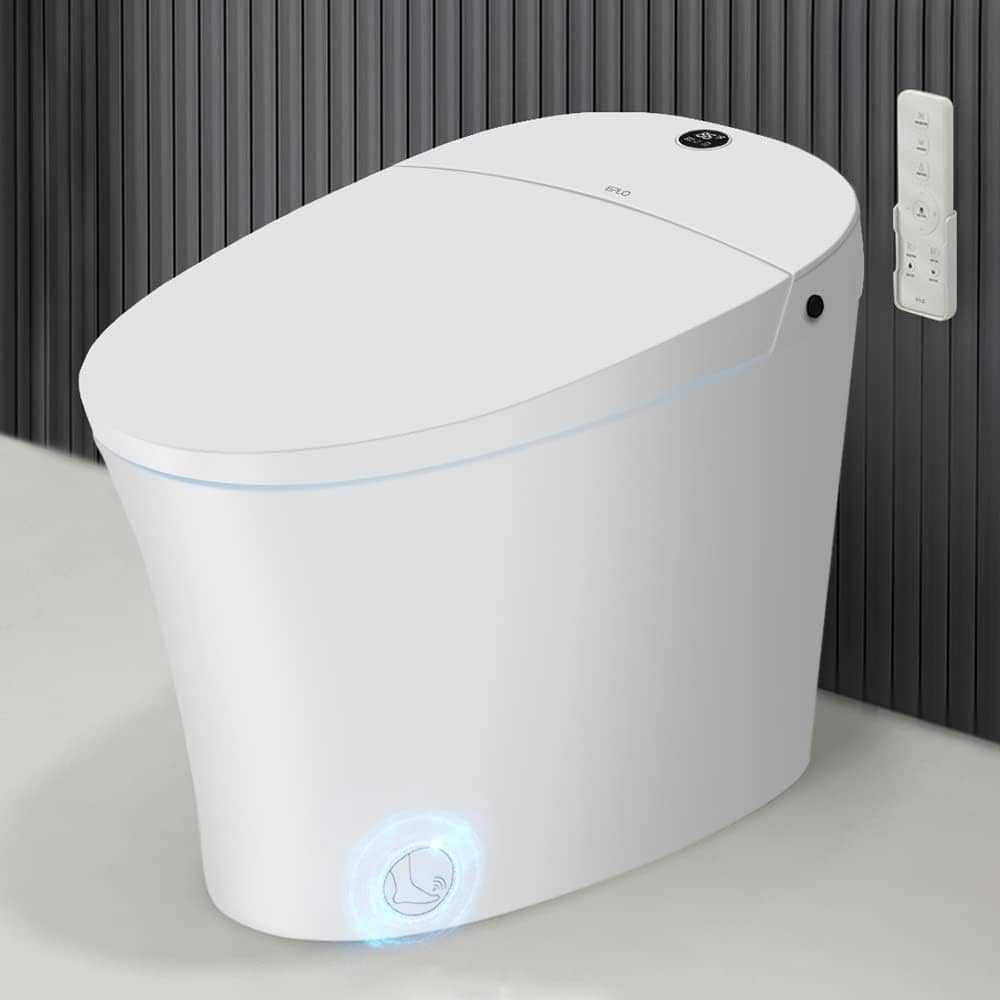
Bidet toilets combine flushing with warm water sprays for cleaning, using 1.28 gallons per flush to meet water-efficiency standards. In 2025, they’re a hallmark of hygiene-focused sanitation, offering adjustable nozzles, heated seats, and air drying for enhanced comfort. Popular in Japan, where they’re used in 80% of homes, bidet toilets are gaining traction in North America and Europe, reflecting a cultural shift toward water-based cleaning over toilet paper, which reduces environmental impact.
Installation requires power for heating and spray functions, adding complexity but manageable by professionals. Maintenance involves cleaning nozzles to prevent clogs, ensuring hygienic operation. Culturally, bidet toilets align with Asian and European preferences for thorough cleansing, with their adoption in Western markets driven by health-conscious consumers. In 2025, their water-efficient flush supports conservation mandates, such as California’s WaterSense standards. Their versatility suits family homes, hotels, or offices prioritizing hygiene and comfort. While power dependency limits use in rural areas, their benefits make them ideal for urban settings. Bidet toilets are one of the best toilet types for users seeking superior hygiene, comfort, and eco-friendly sanitation in modern bathrooms.
Vacuum-Assist Toilets: High-Efficiency Flushing
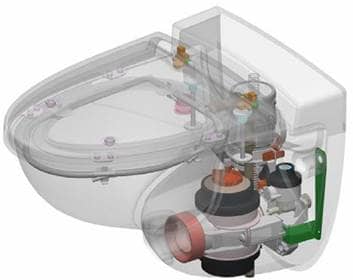
Vacuum-assist toilets use suction combined with minimal water (0.5-1 gallon per flush) to remove waste, offering high-efficiency sanitation for mobile settings like trains, planes, RVs, or marine vessels. The vacuum system pulls waste into a holding tank, ensuring a powerful flush with low water use, making them ideal for environments where water and space are limited. In 2025, their eco-friendly design aligns with global sustainability goals, particularly in water-scarce regions or transportation sectors aiming to reduce resource consumption.
Installation requires a specialized vacuum system and holding tank, often needing professional expertise, especially in mobile applications. Maintenance involves checking the vacuum pump and emptying tanks, a task for trained personnel. Culturally, vacuum-assist toilets are prevalent in industrialized nations with advanced transportation infrastructure, like Japan and Europe, reflecting a focus on efficiency and mobility. In 2025, their low water use supports conservation efforts, such as Australia’s WELS ratings. While their specialized design limits residential use, their reliability in mobile settings makes them invaluable. Vacuum-assist toilets are among the best toilet types for transportation, marine, or RV applications needing compact, water-efficient sanitation.
Chemical Toilets: Portable Sanitation
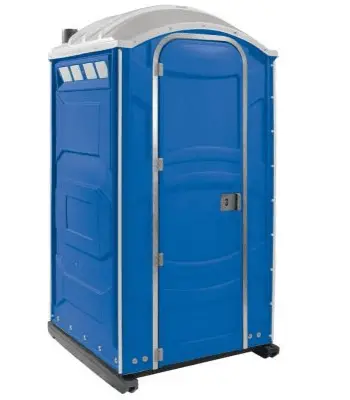
Chemical toilets, used in RVs, construction sites, or boats, employ chemical solutions to neutralize waste odors and break down solids, requiring no plumbing. In 2025, they’re a vital solution for temporary or mobile sanitation, using minimal resources to provide hygienic conditions. Their lightweight design, typically 15-20 lbs, allows easy transport, and setup involves placing the unit on a level surface, making them accessible for events or remote work sites.
Globally, chemical toilets are common in North America, Europe, and developing regions, where they support sanitation at festivals, campsites, or construction projects. Culturally, they prioritize function over comfort, aligning with practical sanitation needs in temporary settings. Maintenance involves emptying tanks at designated facilities and refilling with chemical solutions, a straightforward process for users or rental services. In 2025, their eco-friendly design, requiring no water, supports sustainability in water-scarce areas. Their portability and affordability make them ideal for outdoor enthusiasts or industries needing flexible sanitation. Chemical toilets are one of the best toilet types for temporary, mobile applications, ensuring hygiene without permanent infrastructure.
Chemical Cartridge Toilets: Advanced Portability
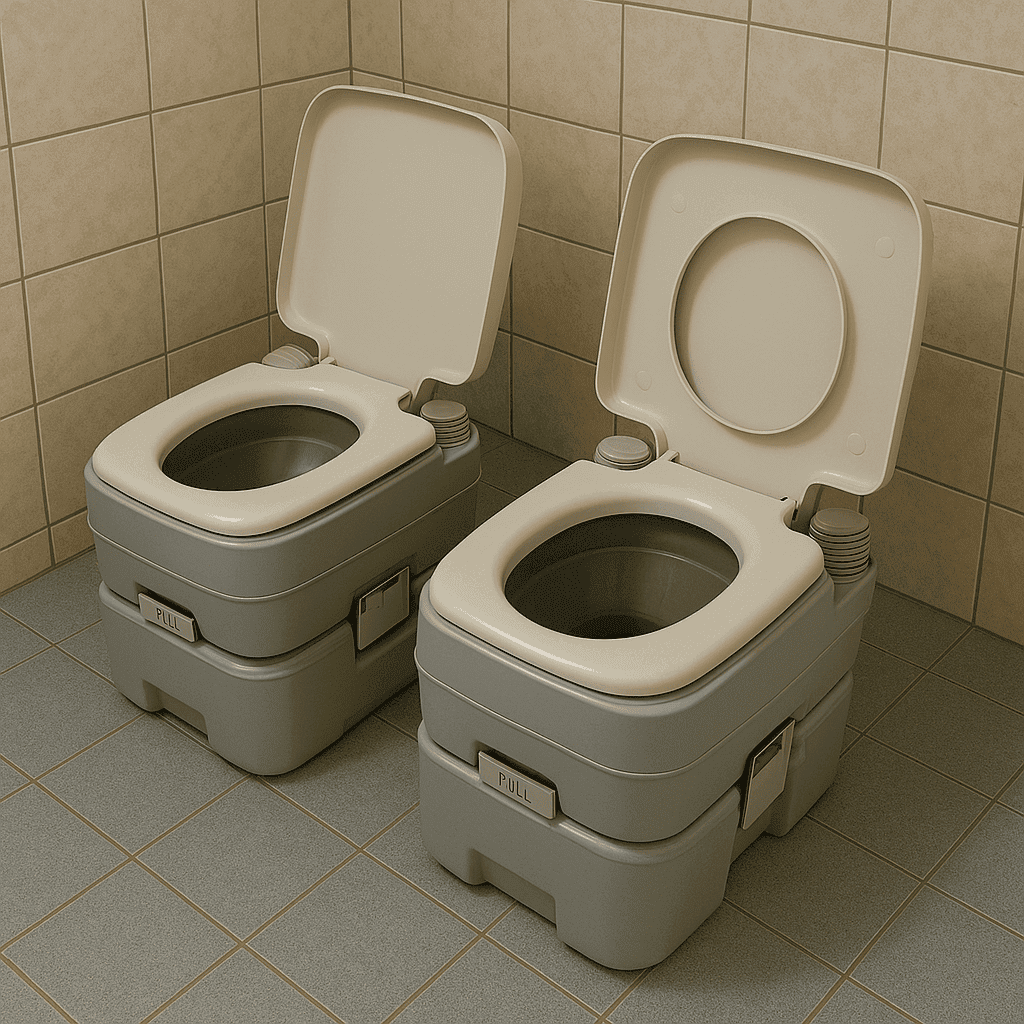
Chemical cartridge toilets are an advanced version of chemical toilets, using replaceable cartridges pre-filled with waste-neutralizing chemicals, offering enhanced portability and ease of use. In 2025, they’re popular for RVs, boats, or camping, where their lightweight design (15-25 lbs) and no-plumbing requirement make them ideal for mobile sanitation. The cartridge system simplifies waste disposal, allowing users to swap out used cartridges without handling raw waste, improving hygiene and convenience.
Globally, chemical cartridge toilets are prevalent in North America and Europe, particularly among outdoor enthusiasts and marine users, reflecting a demand for user-friendly, portable sanitation. Installation is minimal, requiring only a level surface, and maintenance involves replacing cartridges monthly, a quick task that eliminates the need for tank cleaning. Culturally, they align with Western preferences for convenience and hygiene, with their adoption growing in recreational sectors. In 2025, their waterless design supports sustainability, making them suitable for water-scarce regions or eco-conscious users. Their compact size and ease of use make them ideal for temporary setups, such as festivals or remote campsites. Chemical cartridge toilets are among the best toilet types for mobile, hygienic sanitation in outdoor or marine environments.
Incinerating Toilets: Waste Elimination
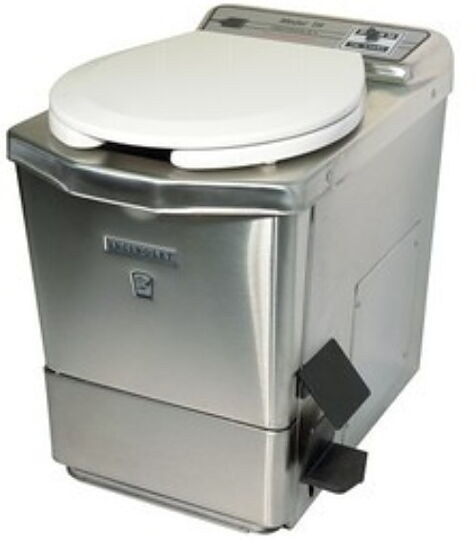
Incinerating toilets burn waste into sterile ash using electricity or gas, requiring no water or plumbing, making them ideal for off-grid cabins, remote research stations, or water-scarce regions. In 2025, they’re a sustainable solution, consuming minimal resources while ensuring hygienic waste disposal. The incineration process, activated after each use, reduces waste to a small volume of ash, collected in a tray for easy removal, supporting eco-friendly sanitation.
Installation requires a power source and ventilation to manage fumes, a setup manageable by professionals for remote settings. Maintenance involves emptying ash trays monthly, a simple task for users. Culturally, incinerating toilets resonate with off-grid communities in North America and Scandinavia, where independence from water infrastructure is valued, and are used in extreme climates like Antarctica. In 2025, their waterless design aligns with global sustainability goals, such as Australia’s WELS ratings. Their high cost and power dependency limit broad adoption, but their reliability in remote areas makes them invaluable. Incinerating toilets are one of the best toilet types for off-grid users seeking sustainable, low-maintenance sanitation in challenging environments.
Squatting Toilets: Cultural Tradition
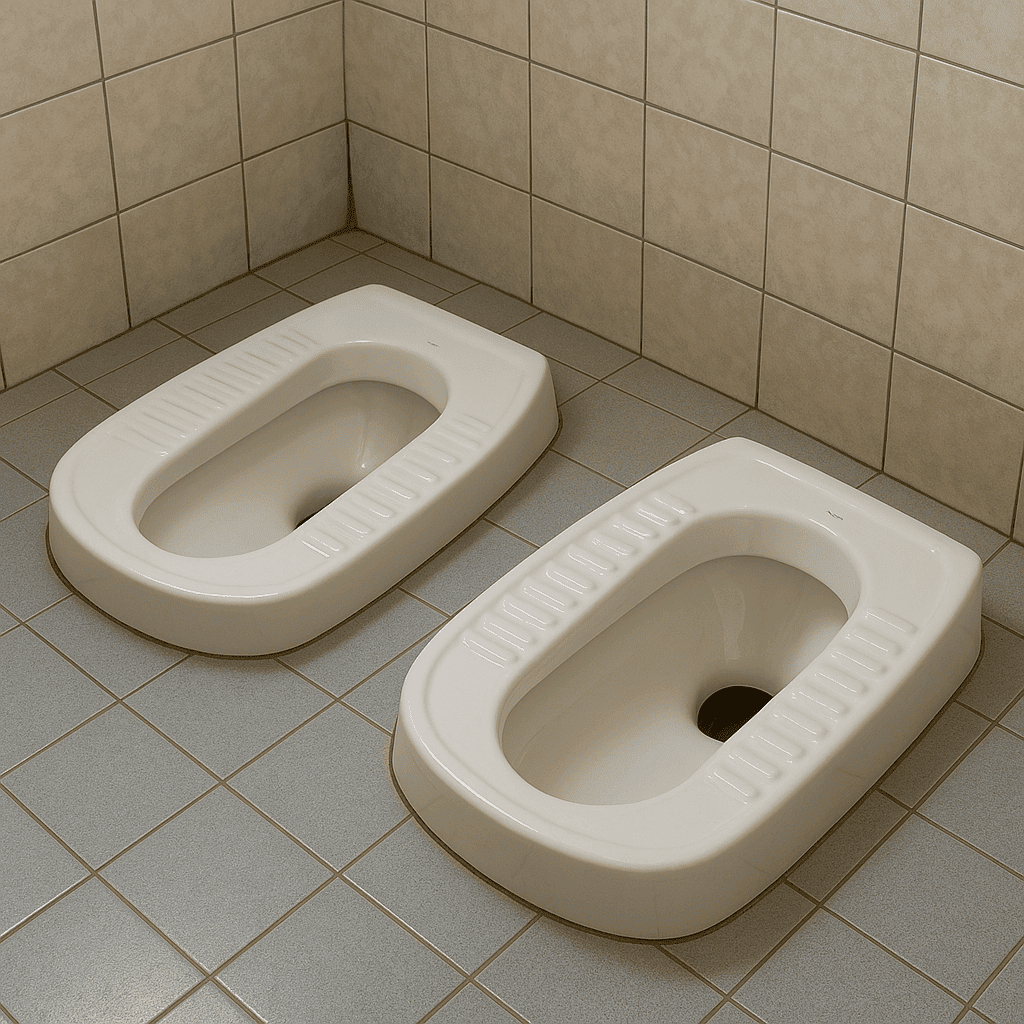
Squatting toilets, floor-level units encouraging a natural squatting posture, use 0.5-1 gallon per flush or operate waterlessly, offering hygienic, affordable sanitation. In 2025, they’re prevalent in Asia, Africa, and parts of the Middle East, where squatting is culturally preferred for its health benefits, including improved digestion and reduced strain. Their simple design, often ceramic or stainless steel, ensures durability and easy cleaning, making them ideal for public restrooms, rural homes, or low-cost housing.
Installation is minimal, requiring a drain line for flush models or a pit for waterless ones, and is cost-effective for large-scale projects. Maintenance involves cleaning with mild products, ensuring hygiene in high-traffic settings. Culturally, squatting toilets reflect traditional sanitation practices in countries like India and China, where they’re seen as practical and health-promoting. In 2025, their low water use supports conservation in water-scarce regions, aligning with global sustainability goals. While less common in Western countries due to seated toilet preferences, their affordability makes them a top choice for developing regions. Squatting toilets are among the best toilet types for cultural, budget-conscious, or high-traffic settings needing durable, eco-friendly sanitation.
Vault Toilets: Rural Simplicity
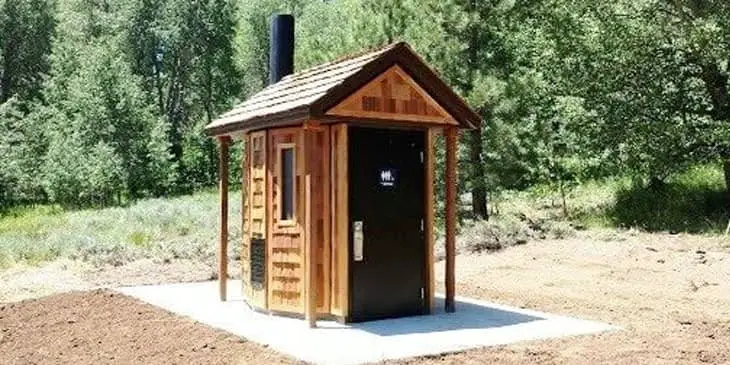
Vault toilets, non-flushing systems with underground storage pits, provide simple, eco-friendly sanitation for rural areas, national parks, or remote campsites. In 2025, they’re a cost-effective solution where plumbing is unavailable, using no water and relying on a sealed vault to collect waste, which is pumped out periodically by professionals. Their durable construction, often concrete or fiberglass, withstands harsh climates, ensuring long-term reliability in settings like U.S. national parks or rural Africa.
Installation involves digging a vault and securing the toilet, a process manageable for community projects or park services. Maintenance is minimal, requiring vault pumping every 1-2 years and cleaning with mild products to maintain hygiene. Culturally, vault toilets align with practical sanitation needs in rural or indigenous communities, where simplicity and affordability are prioritized over comfort. In 2025, their waterless design supports sustainability, making them ideal for water-scarce regions. Their lack of flushing limits use in urban settings, but their durability makes them invaluable for remote areas. Vault toilets are one of the best toilet types for rural, eco-friendly sanitation without infrastructure.
Freeze Toilets: Extreme Climate Solution
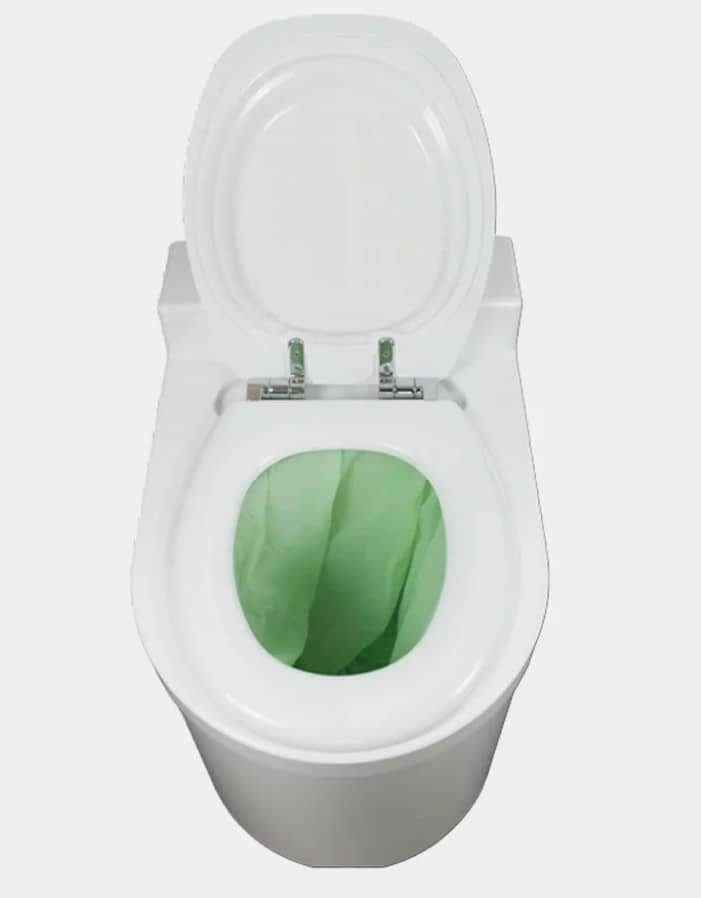
Freeze toilets, an emerging waterless technology, freeze waste at sub-zero temperatures for sanitary disposal, ideal for extreme climates like Arctic regions, high-altitude camps, or Antarctic research stations. In 2025, they’re a niche but innovative solution, using refrigeration to solidify waste, which is then removed as a frozen block, ensuring hygiene without water. Their power-dependent design requires electricity, making them suitable for remote settings with reliable energy sources, such as solar or generators.
Installation involves connecting to a power source and ventilation system, a task for professionals in specialized environments. Maintenance requires emptying frozen waste monthly, a straightforward process for trained users. Culturally, freeze toilets are used in scientific or exploratory communities, like polar research stations, where waterless sanitation is critical. In 2025, their eco-friendly design supports sustainability, minimizing environmental impact in fragile ecosystems. Their high cost and power needs limit broad adoption, but their reliability in extreme conditions makes them invaluable. Freeze toilets are among the best toilet types for remote, cold environments needing hygienic, waterless sanitation.
Children’s Toilets: Kid-Friendly Design
Children’s toilets, designed with smaller dimensions and 15-inch seat heights, use 1.28 gallons per flush, offering accessible sanitation for young users in schools, preschools, or family homes. In 2025, they’re a growing segment in North America, Europe, and Asia, where child-friendly facilities are prioritized for safety and comfort. Their compact size ensures children can use them independently, with gravity-based flushing providing reliable waste removal while meeting WaterSense standards for water efficiency.
Installation mirrors standard flush toilets, requiring a 2-inch drain line, and is manageable for DIY enthusiasts. Maintenance involves cleaning with non-abrasive products and checking valves, ensuring hygiene in high-use settings like classrooms. Culturally, children’s toilets reflect a focus on inclusive design in developed nations, where educational facilities emphasize accessibility for young learners. In 2025, their water-efficient flush supports conservation, aligning with global standards like Australia’s WELS ratings. Their smaller size limits use for adults, but their tailored design makes them ideal for family bathrooms or schools. Children’s toilets are one of the best toilet types for kid-friendly, eco-conscious sanitation in educational or residential settings.
Hybrid Toilets: Multifunctional Innovation
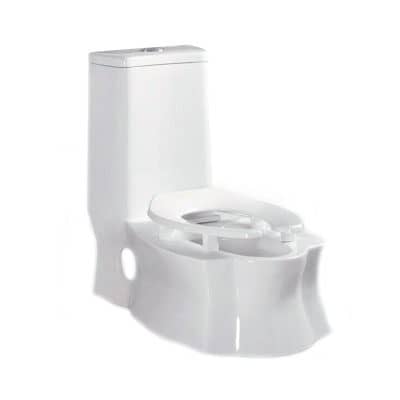
Hybrid toilets combine smart, bidet, and dual-flush technologies, using 1.0-1.28 gallons per flush to offer a versatile, high-performance sanitation solution. In 2025, they’re a premium choice for luxury homes, upscale hotels, and tech-savvy offices, integrating touchless flushing, heated seats, water sprays, and app-based controls for personalized comfort. Their multifunctionality reduces water and paper use, aligning with WaterSense standards and supporting sustainability in urban settings.
Installation requires power, Wi-Fi, and standard plumbing, necessitating professional expertise. Maintenance involves cleaning nozzles and sensors, ensuring consistent operation. Culturally, hybrid toilets are popular in Japan, North America, and Europe, reflecting a demand for technology-driven, hygienic sanitation in modern lifestyles. In 2025, their eco-friendly flush and waste-reducing features make them ideal for green buildings or water-scarce regions like California. Their high cost limits broad adoption, but their all-in-one design appeals to users seeking convenience and luxury. Hybrid toilets are among the best toilet types for tech-savvy, eco-conscious users wanting comprehensive functionality in modern bathrooms.
Cultural and Historical Context
Toilets reflect cultural and historical influences. In Japan, bidet toilets emphasize hygiene, used in 80% of homes. Europe favors wall-hung toilets for space efficiency, while squatting toilets dominate in Asia and Africa for health and affordability. Vault and composting toilets are common in rural regions, supporting sustainability. Historically, Alexander Cummings’ 1775 S-shaped pipe revolutionized sanitation, trapping odors and inspiring modern flush systems. In 2025, innovations like India’s bio-digester toilets address rural needs, blending tradition with technology, while smart and hybrid toilets cater to urban, tech-driven cultures.
Choosing the Right Toilet
Select based on:
- Space: Corner or round bowl for small bathrooms; wall-mounted or elongated for larger spaces.
- Plumbing: Tankless, vacuum-assist, or upflush need specific systems; vault or composting need none.
- Users: Comfort height for seniors; children’s for kids; smart or hybrid for tech enthusiasts.
- Budget: Round bowl or two-piece for affordability; smart or expensive for luxury.
- Sustainability: Dual-flush, waterless, or eco-friendly for water-scarce areas.
Comparison Table: Best Toilet Types in 2025
| Toilet Type | Water Usage (gpf) | Cost Range | Best For | Installation Difficulty |
|---|---|---|---|---|
| One-Piece | 1.28-1.6 | $300-$1,500 | Modern homes, easy cleaning | Moderate |
| Two-Piece | 1.28-1.6 | $150-$800 | Budget buyers, traditional homes | Easy |
| Wall-Mounted | 1.28-1.6 | $500-$2,000 | Small bathrooms, luxury settings | High |
| Composting | 0 | $900-$2,500 | Off-grid, eco-conscious users | Moderate |
| Smart Toilet | 1.0-1.6 | $1,000-$10,000 | Tech-savvy, luxury homes | High |
| Children’s Toilet | 1.28 | $150-$600 | Schools, family homes | Easy |
Maintenance Tips
- Flush Toilets: Use non-abrasive cleaners; check valves annually.
- Smart/Bidet/Hybrid: Clean nozzles and sensors monthly.
- Waterless (Composting/Incinerating/Freeze): Empty bins/ash/waste regularly.
- Portable/Chemical: Empty tanks, refill chemicals.
- Vault/Squatting: Pump vaults or clean surfaces periodically.
Frequently Asked Question (FAQs)
Q: Most water-efficient toilet?
A: Dual flush and waterless toilets (0.8-1.28 gpf) save the most water.
Q: Best for small bathrooms?
A: Corner or wall-mounted toilets maximize space.
Q: Best for kids?
A: Children’s toilets ensure accessibility.
Q: Why choose hybrid toilets?
A: They combine smart, bidet, and eco-friendly features for versatility.
Final Words
Different types of toilets appeal to diverse users. When shopping for a toilet, you should consider many factors such as toilet type, style, manufacturer or brand, design, flush type, efficiency rating, and materials.
You should also take note of the purpose of the toilet or whether it’s going to be for home or commercial use. Make sure to consider how many people would be using the toilet, your location, water resources, plumbing system, and sanitation mode preferred.
Look for a toilet that isn’t just visually appealing but also functional. It must have the basics of what you need in a standard toilet plus a couple of add-on features that would provide you the comfort, convenience, and performance that you want in a toilet at home.
